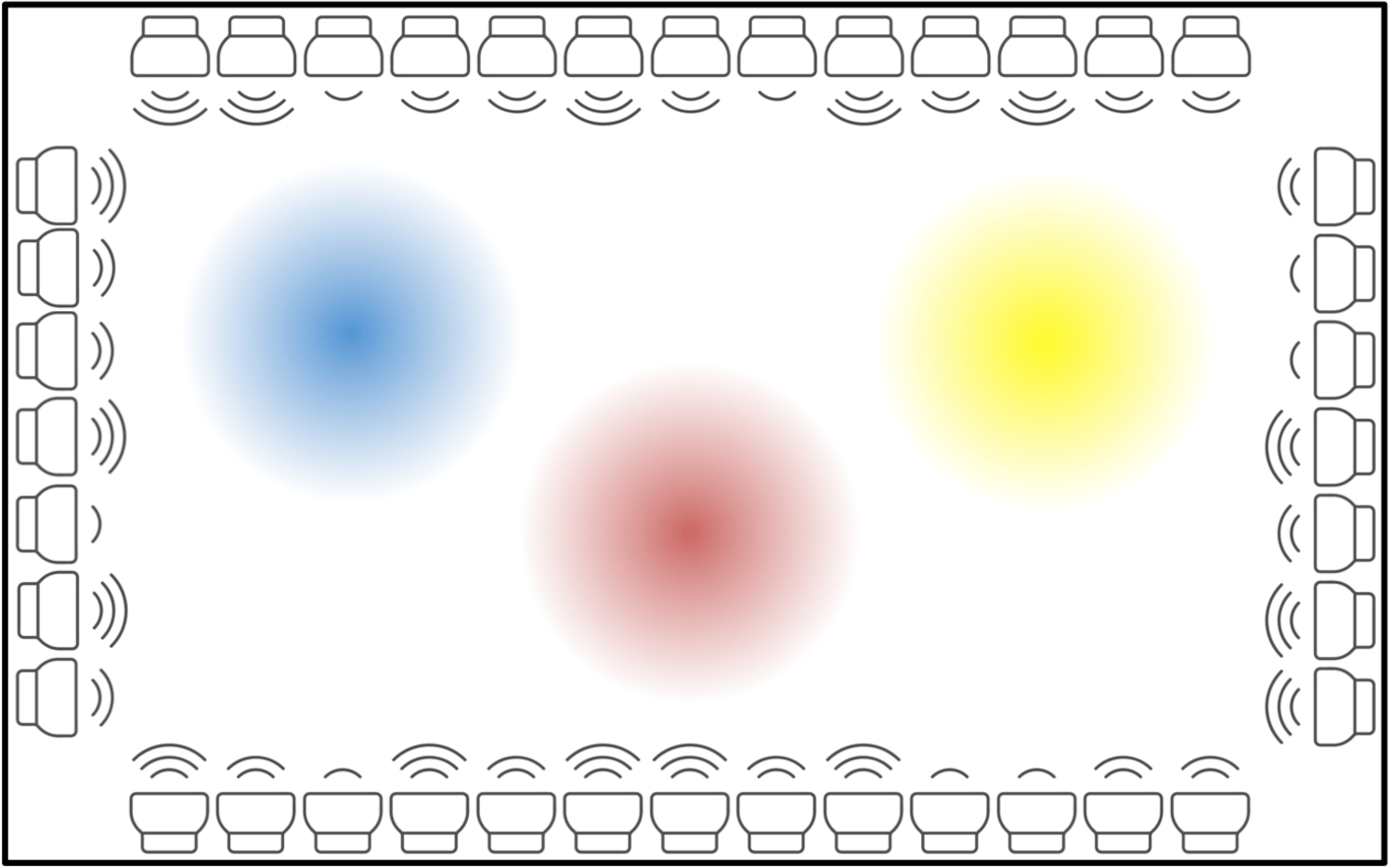Picture your typical busy cafe or restaurant that’s full of people. The diners are usually all forced to listen to the same music that’s pumped into the venue via the speakers. What if you could create sound that was tailored to each table’s taste so the people there could listen to their own music, sports event, news or just enjoy the silence?
It might sound impossible but it’s closer to becoming a reality than you think. And there are many potential uses for these customized zones of sound.
For example, open plan offices could potentially be quieter as the sounds from watching online videos or conferencing could be custom designed so as not to annoy your co-workers. It could be possible to watch movies at the cinema or at home in different languages by simply sitting in the zone that suits you best.
Personalised advertisement in shopping malls could become a reality, tailored to individuals. Sports stadiums could have various commentary and a quieter field to play on. Maybe art installations and museums could provide audible content in front of exhibits.
The possibilities are endless.
How does it work?
The sounds you hear every day are waves that travel through air, just like the ripples on the surface of a pond. When the waves meet they can either stand on top of each other, cancel each other or combine to make new sounds.
But by carefully controlling the waves and where they combine, it is possible to have them cancel in some spaces and amplify in other spaces.
If this idea sounds familiar it might be because you’ve heard of noise cancelling headphones and earphones that perform a similar trick. They listen to sounds moving towards the ear and produce a wave that cancels that sound. But this only happens in one very small area at the ear.
Now think of extending this to a larger area surrounded by loudspeakers to control the ripples of sound travelling through the space inside.
In the zone
Each loudspeaker is tuned carefully. They can now produce zones of sound from standing waves and zones of quiet from cancelling waves.
 By varying the output of sounds from an array of speakers surrounding a space you can target specific sounds in specific locations. The different sounds here are represented by the different colors. The Conversation, CC BY-ND
By varying the output of sounds from an array of speakers surrounding a space you can target specific sounds in specific locations. The different sounds here are represented by the different colors. The Conversation, CC BY-ND
Theoretically, with unlimited power, any size and any number of zones of sound or silence can be created. But it is more practical to create zones no smaller than approximately half a meter wide and separated by about half a meter. This size would comfortably fit a human head and so the need to go smaller is often not necessary.
A difficult obstacle to overcome is the reflections of sound from the walls of a room. Reflections introduce more sound that needs to be controlled.
The same way light reflects off a mirror, sound reflects off a wall. A mirror that is dirty or covered reflects light poorly and the walls of a room can be treated in a similar manner to reduce sound reflections.
But for walls that can’t be treated, a number of microphones in the room may be a solution to reducing the reflections. Lasers have also been used to measure how sound travels through a space and might hold potential in the future to predict room reflections.
Generally, the more loudspeakers used, the better the quality of the zones that can be created. When space is limited, the number of loudspeakers that can fit into a room is reduced.
If too few loudspeakers are used and too many zones created, sounds start to leak between the zones. This can cause issues with privacy but not all leaked sounds can be heard.
One way to improve the privacy in the zones is by using a technique called sound masking. We do this by carefully adding zones of subtle noise that acoustically covers up leaked sounds with minimal effect on others.
We can also reduce the error when creating the zones. This is done by allowing sounds to leak when people can’t hear them, which saves energy. That saved energy can then be used to improve sounds in other places where people want to hear them.
Promising research
Some promising research looks at using mathematical models of how the ear hears and processes sound.
This can provide better quality zones and reduce the number of loudspeakers required. Similar to how popular MP3 audio, MP4 video and JPG picture storage technologies work by using human perception to decrease file sizes.
There are still numerous questions to be answered, such as how do we perceive these zones of sound, is the quality of the sound any good and can reflections from the room be efficiently compensated for?
But we are still on the path to making them a reality. In the past ten years a lot of theory has been published on this topic. In the past five years some two-zone systems have been shown to work in the real world.
Researchers have shown it is possible to provide a couple of distinct zones (with about half a metre between them). One zone can contain speech (or music) at a volume equivalent to a regular conversation, the other zone can contain a sound at a volume similar to background air conditioning.
Scale this up and public places will never sound the same again.![]()
BY Jacob Donley, PhD Candidate, University of Wollongong and Christian Ritz, Associate professor, University of Wollongong. This article was originally published on The Conversation. Read the original article.


